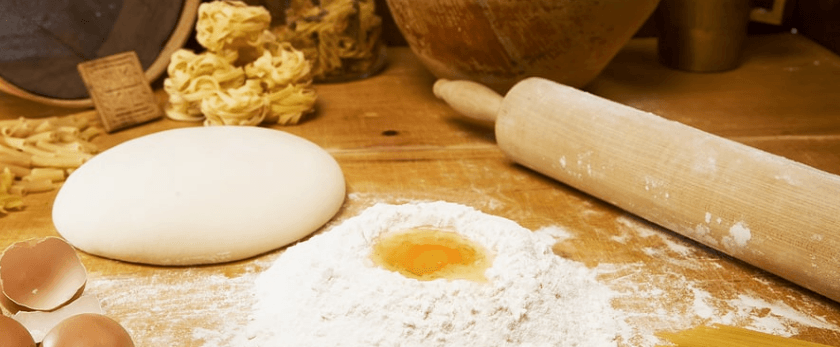Welcome to the world of homemade pasta! Not only is it a delicious and versatile dish, but it also has a positive impact on the environment. In this article, we will explore why store-bought pasta is harmful to the planet and how making your own can make a difference. We will also provide you with all the necessary information and steps to make your own homemade pasta. So let's get started!
Why Store-Bought Pasta is Bad for the Environment
-
Packaging Waste: Store-bought pasta often comes in plastic packaging, which contributes to the growing problem of plastic pollution. According to National Geographic, only 9% of plastic waste is recycled, and the rest ends up in landfills or the environment, taking hundreds of years to decompose.
-
Carbon Footprint: The production and transportation of store-bought pasta contribute to greenhouse gas emissions, which contribute to climate change. The ingredients used in store-bought pasta, such as wheat and eggs, are often grown and processed in different countries, resulting in a high carbon footprint.
-
Chemicals and Preservatives: Store-bought pasta often contains preservatives and additives to prolong its shelf life. These chemicals can be harmful to both our health and the environment. When we consume these products, we also contribute to the pollution of our waterways and soil when we dispose of the packaging.
Why Making Your Own Pasta is Better for the Environment
-
Reduces Packaging Waste: By making your own pasta, you can eliminate the need for plastic packaging. You can store your homemade pasta in reusable containers, reducing your contribution to plastic pollution.
-
Lowers Carbon Footprint: Making your own pasta means using locally sourced ingredients, reducing the carbon footprint of transportation. You can also choose to use organic and sustainable ingredients, further reducing your impact on the environment.
-
No Chemicals or Preservatives: When you make your own pasta, you have control over the ingredients used. You can choose to use organic and natural ingredients, eliminating the need for harmful chemicals and preservatives.
-
Compostable Waste: The leftover scraps and trimmings from making homemade pasta can be composted, reducing the amount of waste that ends up in landfills. Composting also helps to enrich the soil and reduce the need for chemical fertilizers.

What You Will Need
- Flour: You can use all-purpose flour or semolina flour for your pasta dough.
- Eggs: Fresh, organic eggs are recommended for the best flavor and texture.
- Water: You will need a small amount of water to help bind the dough.
- Salt: A pinch of salt adds flavor to the pasta dough.
- Rolling Pin: A rolling pin is essential for rolling out the dough.
- Pasta Machine: While not necessary, a pasta machine can make the process easier and more efficient.
- Cookie Cutters: If you want to make different shapes of pasta, cookie cutters can come in handy.
- Drying Rack: A drying rack is useful for drying out the pasta before cooking.
Directions
-
In a large mixing bowl, combine 2 cups of flour and a pinch of salt. Make a well in the center of the flour mixture.
-
Crack 3 eggs into the well and add 1 tablespoon of water. Using a fork, gradually mix the eggs and water into the flour until a dough forms.
-
Knead the dough on a floured surface for about 10 minutes until it becomes smooth and elastic.
-
Cover the dough with a clean kitchen towel and let it rest for 30 minutes.
-
After resting, divide the dough into smaller portions and roll them out using a rolling pin. If using a pasta machine, follow the manufacturer's instructions.
-
Once the dough is rolled out, you can use cookie cutters to make different shapes of pasta or cut it into thin strips for spaghetti or fettuccine.
-
Place the cut pasta on a drying rack and let it dry for about an hour before cooking.
-
To cook the pasta, bring a pot of salted water to a boil and add the pasta. Cook for 2-3 minutes or until al dente.
-
Serve with your favorite sauce and enjoy your homemade pasta!
Tips for Sustainability
- Use organic and locally sourced ingredients to reduce your carbon footprint.
- Use a pasta machine to reduce the amount of flour needed and minimize waste.
- Save the pasta scraps and trimmings to make homemade broth or compost them.
- Use reusable containers to store your homemade pasta.
- Consider making a larger batch and freezing the extra pasta for future use.
Conclusion
Making your own pasta is not only a fun and rewarding experience, but it also has a positive impact on the environment. By eliminating packaging waste, reducing your carbon footprint, and using natural ingredients, you can make a difference in creating a more sustainable future. So next time you're craving pasta, why not try making your own? Your taste buds and the planet will thank you.










